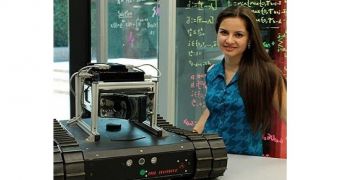Many search and rescue crews use specially trained dogs to find people who are stranded somewhere or buried under wreckage after a disaster. There aren't that many dogs to go around, though, so a certain postgraduate of ITESM decided to provide an alternative to live, trained help.
Her idea was this: since dogs find people by scent, then it's a simple matter of inventing a special sensor that can do the same thing, but without the months and years of dog rearing and training.
One thing led to another, and voila! An electronic nose that can find people that became isolated or otherwise stuck after an earthquake, hurricane or flood.
Of course, the actual, technical term used to describe the object is “olfactory system.” The principle is based on alcohol detection systems.
Blanca Lorena Villarreal, during her postgraduate stay at the Tecnologico de Monterrey, or ITESM for short, developed the device so that robotic platforms would be able to pick up and follow scent trails.
Naturally, the algorithms are far more complex, since they need to recognize other odors, as well as toxic gases and other potentially harmful elements. Blood, sweat and human urine are all recognizable.
The student couldn't adapt the algorithms just like that, however. She had to examine how animals detected scent in the first place, then translate everything into math.
She determined that animals used two “characteristics” to determine the direction of a scent trail: the different concentrations that reach the nostrils and the time difference.
The chemical sensors she came up with, this electronic nose, can perceive specific odors and the direction in a similar manner. The “nose” even has a septum separating the “nostrils.”
The data recorded by this nose is wirelessly sent to a computer, via radio. There, the aroma is analyzed in real time, so that the programmed algorithms can point the way. Each time the air chamber empties due to a cycle of ventilation, sensors can enact new measurements.
The robotic nose should allow machines to detect scent trails as well and fast as any dog trained for it. Cracking the mystery of discriminating odors is next on the list of Blanca Lorena Villarreal, along with some better AI to give robots the ability to make decisions (which smell to follow first, for example). No clue yet, however, on how long it will take for true smell-capable rescue bots to be put into use worldwide.

 14 DAY TRIAL //
14 DAY TRIAL //